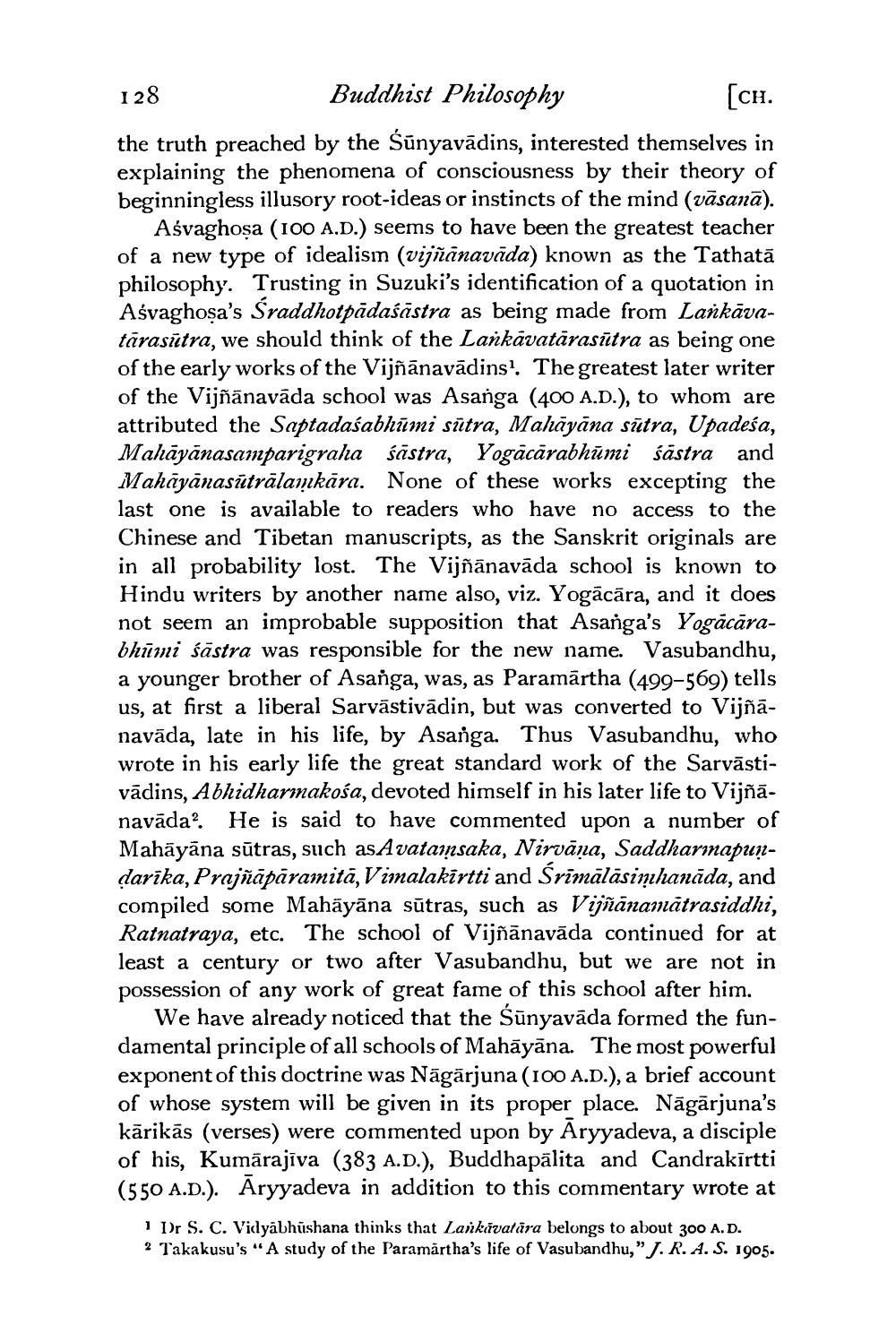________________
128
[ch.
Buddhist Philosophy the truth preached by the Śūnyavādins, interested themselves in explaining the phenomena of consciousness by their theory of beginningless illusory root-ideas or instincts of the mind (vāsanā).
Ašvaghosa (100 A.D.) seems to have been the greatest teacher of a new type of idealisın (vijñānavāda) known as the Tathatā philosophy. Trusting in Suzuki's identification of a quotation in Ašvaghosa's Sraddhotpādaśāstra as being made from Lankāvatārasītra, we should think of the Lankavatārasūtra as being one of the early works of the Vijñānavādins? The greatest later writer of the Vijñānavāda school was Asanga (400 A.D.), to whom are attributed the Saptadaśabhumi sätra, Mahāyāna sūtra, Upadeśa, Mahāyānasamparigraha sõstra, Yogācārabhūmi śästra and Mahāyānasūtrālamkāra. None of these works excepting the last one is available to readers who have no access to the Chinese and Tibetan manuscripts, as the Sanskrit originals are in all probability lost. The Vijñānavāda school is known to Hindu writers by another name also, viz. Yogācāra, and it does not seem an improbable supposition that Asanga's Yogācārabhumi śāstra was responsible for the new name. Vasubandhu a younger brother of Asanga, was, as Paramartha (499-569) tells us, at first a liberal Sarvāstivādin, but was converted to Vijñānavāda, late in his life, by Asanga. Thus Vasubandhu, who wrote in his early life the great standard work of the Sarvāstivādins, Abhidharınakośa, devoted himself in his later life to Vijñānavāda? He is said to have commented upon a number of Mahāyāna sūtras, such as Avatarsaka, Nirvana, Saddharınapundarika, Prajñāpāramitā, Vimalakirtti and Srimālāsimhanāda, and compiled some Mahāyāna sūtras, such as Vijñānamätrasiddhi, Ratnatraya, etc. The school of Vijñānavāda continued for at least a century or two after Vasubandhu, but we are not in possession of any work of great fame of this school after him.
We have already noticed that the Sūnyavāda formed the fundamental principle of all schools of Mahāyāna. The most powerful exponent of this doctrine was Nāgārjuna (100 A.D.), a brief account of whose system will be given in its proper place. Nāgārjuna's kārikās (verses) were commented upon by Aryyadeva, a disciple of his, Kumārajīva (383 A.D.), Buddhapālita and Candrakīrtti (550 A.D.). Āryyadeva in addition to this commentary wrote at
i Dr S. C. Vidyābhūshana thinks that Lankavatāra belongs to about 300 A.D. 2 Takakusu's "A study of the Paramartha's life of Vasubandhu," J.R. A. S. 1905.




